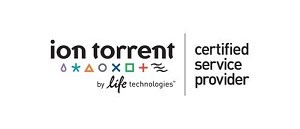An X-linked recessive disease is an inherited disease which usually occurs only in males. Females can “carry” the disease, but are usually not affected. Half of the male children of a mother/carrier will typically be affected by the disease, while half of the females will be carriers (like their mother). All daughters of a male patient are obligate carriers of the disease. However, males can never inherit an X-linked disease from their father.
Females have two copies of the X chromosome, one copy being inherited from the mother and the other from the father. Males have one copy of the X chromosome and one copy of the Y chromosome, having inherited the X chromosome from their mother and the Y chromosome always from their father. The genes located on the X and Y chromosomes are called X-linked and Y-linked, respectively.
In females, the presence of a pathogenic gene mutation in a X-linked gene may be inherited from either the mother or from the (usually) affected father and is typically not sufficient to express the disease. In contrast, in males, the presence of a pathogenic gene mutation in a X-linked gene is inherited from a mother/carrier and is sufficient to cause the disease. Therefore, the characteristic features of X-linked recessive inheritance is that a genetic disease occurs almost exclusively in males (with very rare exceptions) and can never be transmitted from father to son, as fathers give only their Y chromosome to their sons.
Sisters of a patient with an X-linked recessive disease have, on average, 50% probability of being carriers of the same disease. The patient’s daughters are always carriers of the disease (but not affected). The mother of the male patient is also certain to be a carrier of the disease, except in rare cases where the genetic defect first appeared in the male patient (de novo mutations). Briefly, each female carrier has a 50% chance to have an affected male in every pregnancy.
In the case of X-linked genetic disorders, which are ~270, knowledge of the gene mutation associated with the disease can easily determine which of the other family members are at risk or not. If a female family member carries the known pathogenic mutation, then she is at risk of having affected males, which may be prevented through prenatal or preimplantation genetic testing.
Genomic testing for all known X-linked genes and the corresponding genetic diseases (about 270), is often the best tool for carrier identification (or even for affected individuals), provided there is a strong indication for a X-linked genetic disorder. A common example is X-linked mental retardation, a large and heterogeneous group of genetic diseases occurring more frequently in males and associated with mutations in approximately 110 genes of the X chromosome.
Recognizing the value of this genomic testing approach, InterGenetics has developed and offers an NGS panel for the genomic analysis of 270 genes (see gene list) associated with all known X-linked genetic diseases.
We perform DNA sequence analysis, via Next Generation Sequencing (NGS) on a Genome Analyzer – Ion Proton platform, of all exons and intron-exon junctions/splice sites of the 270 genes, allowing us to detect >98% of all pathogenic mutations of the genes through the use of specially developed bioinformatics tools.
Where possible and/or necessary, we carry out additional MLPA analysis in order to detect deletions/duplications of the genes (please consult the final test report).
The test is highly sensitive and complex, so it is necessary that the results are assessed by a specialized team of clinical and molecular geneticists, in order to ensure safe and reliable testing.
Proper clinical genetic assessment and genetic counseling, both before and after testing, is essential in order to determine the optimum testing strategy and also to communicate properly the concepts of pathological and normal.

